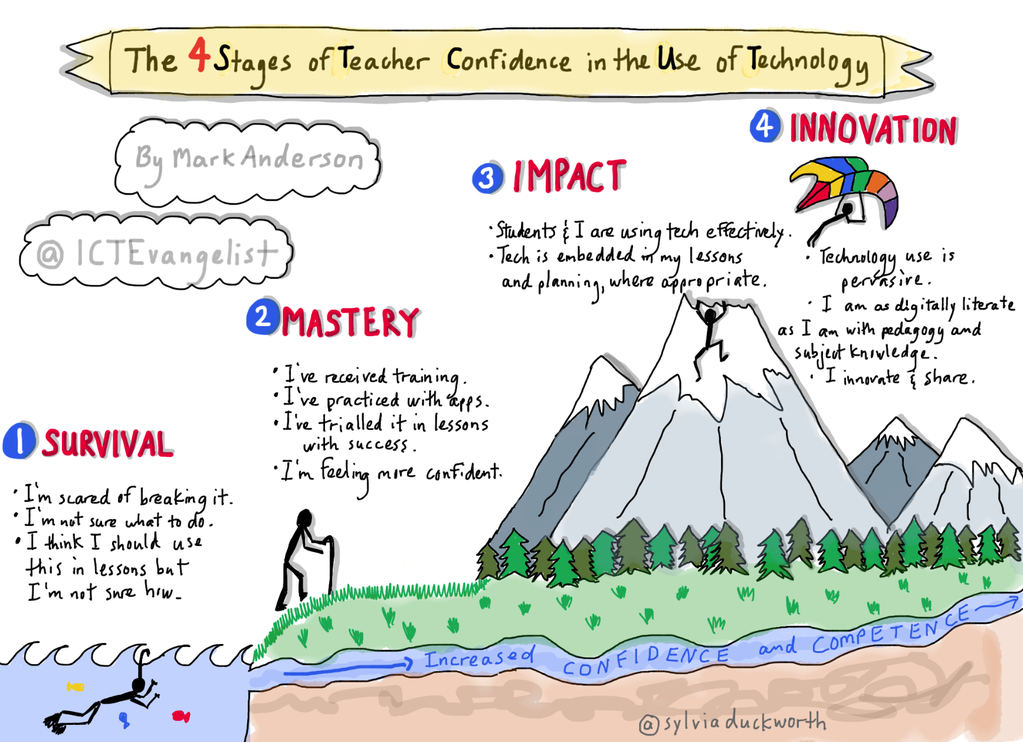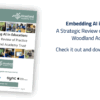
One of great things about teaching is that each year the page resets itself. Children come back from their summer holidays that little bit different. A little taller, new experiences, maybe with a tan, a little more street-wise, complaining their wrists hurt because their writing practice has fallen by the wayside over the last few weeks. In fact whilst these things are true over a holiday break many of them are also true on a daily basis. They are more pronounced over a holiday because the period is much longer, especially the lack of practice with writing. Every day these marginal changes occur in the children that we teach. Despite the fact that we as teachers can’t really see these micro movements so that we cannot see them happening, doesn’t mean that they aren’t actually taking place.
The reset happens every day as do the developments to children’s learning and for us with our practice as teachers too. The child who made a mistake one day will be looking to reset that upon their return the next day. That’s all part of the unconditional positive regard that Crista Hazell talks about here. The teacher being observed one day will appreciate and hope to receive their feedback the same day so that they can move on from the stressful experience and get on with ‘business as usual’ the next day. If we take on board Hattie’s advice on feedback (Visible Learning for Teachers, 2012) for students making sure it is, “just in time, just for me, just for where I am in my learning process, just what I need to help me move forward” then surely this is applicable to colleagues too?
You may notice that I am making parallels between teachers and students above. I’m a firm believer in working with educators in a very similar way in which I would work with my students.
Some readers will not see far beyond the point above and think that I treat teachers like children. It’s not that. It’s about the processes that we use. They are just as relevant in each of the scenarios, it’s just about making them align with what we do on both sides. Our interactions will be different. Our language will be different, both body and vocal language. The processes however can follow the same principles.
Let’s take delivery (be it as lesson or an INSET session) as an example.

Image credit
How many of us are or have been subject to an INSET day where the whole teaching body are required to sit in rows or at tables? A one size fits all delivery model where we all receive the same information and learning. The inspirational speaker turns up and does a drive-by delivery. Turns up. Inspires. Buggers off. Never seeing any (if any) impact and not knowing anyone in the audience at all. Why is it that this happens? Well it’s quite plain to see. We cannot expect the speaker or trainer to know his audience. For most it will be the first time they have met.
I have seen similar impacts in some lessons I observe too, particularly in secondary. Teachers that have big timetables with high turnover of children can be asked to teach up to 300 different children a week. How can you possibly know them all really REALLY well?
There are lots of devices that we use in the classroom that we can apply to the way in which we work with colleagues, particularly when it comes to thinking about supporting their professional development.
In business, businesses often complete what are called SWOT analyses on new projects to look at how they are going, whether there are opportunities to improve and develop or to ascertain if they are worthwhile. It asks individuals to analyse the strengths, weaknesses, opportunities and threats of the activity.
When it comes to working with children or adults, I often go through this process myself. What are the opportunities I have as a professional to make the most of the time that we are together. What strengths are there to the model that is being proposed? What threats are there to progress and impact by completing the activity or project in this particular way? What are the weaknesses of working in this way.
I think as teachers we do this, by design or by accident when we are creating our learning experiences for our children. As a business graduate, I’ve always thought of it in this way although I know of many educators who do this by default – a risk assessment of sorts on the way in which they choose to organise, develop and plan teaching sequences. The reason why we do this is to maximise the potential of the experience the people we are interacting with gain as a result of our input.
When planning lessons or INSET, I think there is a lot to be gained by thinking of the audience in similar ways. Not to think of the adults as children, as I have tried to explain above, but to take on board the pedagogies and strategies that we know work with children and applying them to the delivery of learning opportunities with our colleagues. What are the SWOT’s of working in a traditional way with colleagues when it comes to arranging whole school INSET and CPD?
Sylvia Duckworth’s representation of the ‘Confidence with Technology’ use diagram links nicely to this.
As a reflective educator I know my own strengths and weaknesses. I know for example that I’m good at certain things such as classroom management, inspiring learners, so forth and so on. I also know that I am not particularly good with bits of paper. You can probably imagine that I deal far better with electronic submission (and you would be right) and it certainly helps with how much work I have to carry home with me for marking too.
The same is true of other teachers too. They will have strengths and they will have weaknesses.
Leadership teams will ascertain, through their school improvement plan and visioning where the areas of weakness are in the school. They will also arrange for professional development opportunities for staff to develop their skills. There are a large number of ways in which this can be developed and there is certainly no ‘one size fits all’ approach. Activities such as lesson study and undertaking your own professional reflection through blogging and joining in with learning triads within your setting can be particularly powerful, especially if it is well supported by your leadership team.
One method which is popular in schools however is the INSET day. You know the one. One person stood in front of you. You’re sat with your team. Wishing you were still on holiday. Someone turns up. Makes you smile. Shows you something brilliant and gives you some strategies that you can use the next day. It is often money and time well spent. But not for everybody.
As others have written about before, such as Keven Bartle with his bottom-up leadership posts and my personal experiences of working alongside Jim Smith and Zoë Elder; whilst I approve of getting folk in to support staff development and inspiring colleagues. This approach does not suit all. Taking on board the ideas of the different levels of confidence from Sylvia’s diagram, we can apply this not just to technology but to other aspects of school life too. How confident are you with:
– questioning?
– classroom management?
– assessment?
– group work?
– etc…
You will have some colleagues who are very confident and are masters of these different aspects. You will have some colleagues who really struggle and others who sit somewhere in-between. Why not, rather than using that ‘one size fits all’ approach to ALL of your colleagues, take on board the ideas of Kev’s ‘Trojan Mice’ and embrace the power of your colleagues within – in addition to the inspiration? I have been wowed by many a fab speaker over the years such as Hywel Roberts or more recently Mark Finnis. The thing is, there will be some members of the audience who could share some great aspects too. Not only will their stories be great, but their stories will be about their classrooms in your school with your kids! They will talk about techniques which work with the kids you might be having problems with. Why not employ another technique I’ve used for a long time where a differentiated menu is offered to colleagues when a session is running? Allow colleagues to pick and choose their level of challenge. All of this can be supported in-house or through options such as iTunes U courses that run alongside the day. It’s all possible. Intertwining your approach to your school’s CPD requirements utilising different groups such as those shown in Sylvia’s diagram can be really powerful. It works.
I’m not saying let’s get rid of INSET days and getting speakers in to support training. They provide lots of value. I’m saying let’s rethink this. Let’s look at another way. Let’s embrace the great practice that already exists within our schools. Let’s develop capacity from within. Let’s not just make it about that INSET day but a daily dose of development and sharing. Let’s differentiate the opportunities and have that supported by inspiration too in new and more relevant ways.
Somewhere you might like to look is the Teacher Development Trust (TDT) and the National Teacher Enqury Network (NTEN). Spearheaded by David Weston, the work they have done on effective CPD is stellar.
One person I know who does this with aplomb is Shaun Allison at Durrington in Surrey. His book ‘Perfect (Teacher Led) CPD’ is fab and discusses this approach in more detail. You can see it in action on his school’s blog https://classteaching.wordpress.com where you will see the celebration of the work of colleagues across the school.
Further reading wouldn’t go amiss on Rory Gallagher’s ‘Eddiekayshun‘ blog where he recently written some fab posts which resonate too.
So with all that in mind, isn’t it time to think a bit differently?
Main image credit: https://www.flickr.com/photos/daveynin/14761815590/i
















2 Comments